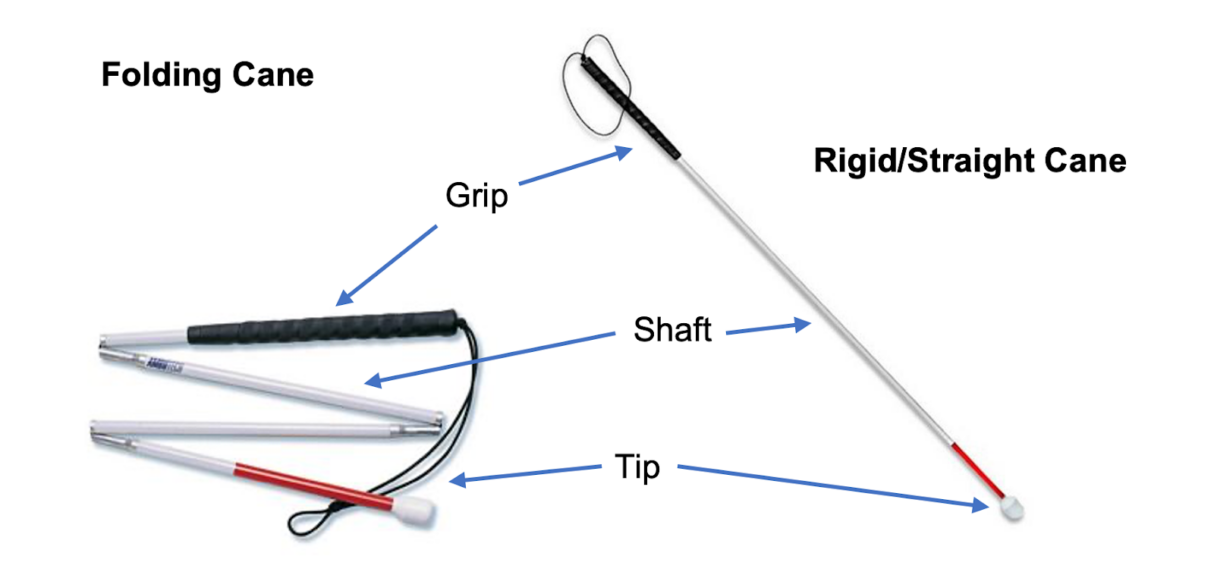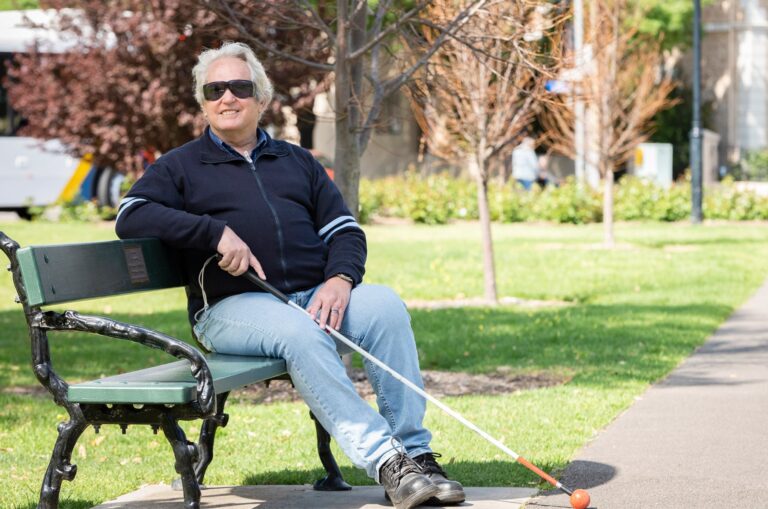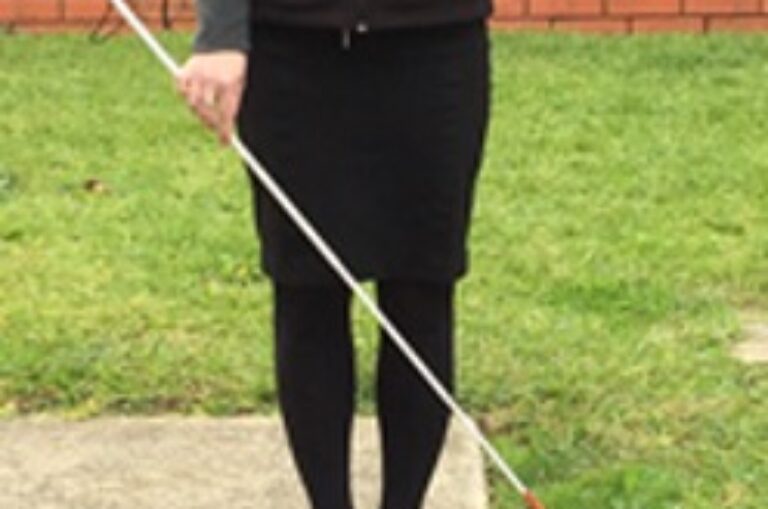What is the long cane?
The long cane/white cane is a primary mobility aid that can increase the independence of a person who is blind or has low vision. It can be used by adults and children. The white can may also be known as a mobility cane.
Using a long cane has many functions including:
- Acting as a bumper, detecting obstacles up to waist height in front of the traveller
- Detecting drop-offs such as stairs and kerbs
- Identifying changes in texture which can help the user keep track of where they are on their travel route
- Being used as a probe to explore nearby surrounds
- Allowing the user to focus on their residual vision or other senses instead of concentrating on where their foot is placed next
- Identifying the user as having low vision or blindness, which can increase their safety – this can be especially useful in congested areas, when using public transport and when crossing roads
- Helping increase confidence and the ability of the user to travel independently.
How do I use a white cane?
As with any skill, specialised training is required to use the long cane safely and effectively. Training to use the white cane will be with an Orientation and Mobility (O&M) Specialist. They will not only introduce the skills required to use the cane, but will also focus on teaching relevant orientation skills and safe routes of travel.
Types of white canes

There are two main types of long cane: the rigid cane and the folding cane. The choice usually comes down to personal preference, with many preferring the folding cane for ease of storage.
There is also an ID cane and a support cane, both of which have different purposes for use.
The material canes are made from also varies. The standard cane is made from aluminium. However fibreglass, graphite, and carbon fibre canes are also available. Learn more about different cane types in our article on common kinds
Choosing a cane
There are several factors to consider when choosing the right long cane for low vision, including:
- Length: The length of the cane should be chosen based on the user’s height and the environment in which it will be used. It is important to choose a cane that is the correct length, as a cane that is too long or too short can be difficult to use and may not provide the desired level of support.
- Material: The material of the cane should be lightweight and durable, such as aluminium or fibreglass. This will make it easy to carry and manoeuvre, and will ensure that the cane will last for a long time.
- Tip: The tip of the cane should be tapered and made of a material that can detect obstacles and changes in terrain, such as rubber or plastic. It is important to choose a tip that is durable and will not wear down over time.
- Handle: The handle of the cane should be comfortable to hold and easy to grip, even in wet conditions. It is also important to choose a handle that is adjustable, so that the cane can be customised to fit the user’s needs and preferences.
Orientation and Mobility (O&M) Specialists are qualified to recommend which long cane is best suited to each individual.
Read more about canes
Ready to continue?
Seems like you have filled this form earlier. Let’s pick up where you left off.






